Spectrum Summary: Era of Militant Nationalism (1905-1909) | History for UPSC CSE PDF Download
Growth of Militant Nationalism
A radical trend of a militant nationalist approach to political activity started emerging in the 1890s and it took a concrete shape by 1905. Alongside this trend, a revolutionary faction also started to take shape.
Why Militant Nationalism Grew
Many factors contributed to the rise of militant nationalism.
1. Recognition of the True Nature of British Rule
- 1892: The Indian Councils Act was criticized by nationalists as it failed to satisfy them.
- 1897: The Natu brothers were deported without trial and Tilak and others, imprisoned on charges of sedition highlighted the repressive nature of British rule.
- 1898: Repressive laws under IPC Section 124 A were further intensified with new provisions under IPC Section 156 A
- 1899: The number of Indian members in Calcutta Corporation was reduced.
- 1904: The Official Secrets Act restricted press freedom, and the Indian Universities Act increased government control over universities.
Growth of Confidence and Self-Respect
- There was a growing faith in self-effort and a growing belief in the capabilities of the Indian people.
- Leaders like Tilak, Aurobindo, and Bipin Chandra Pal repeatedly urged the nationalists to rely on the character and capacities of the Indian people.
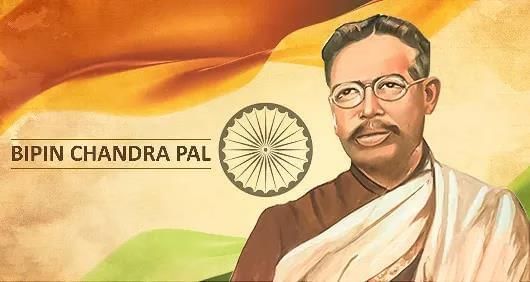
- A feeling started gaining currency that the masses had to be involved in the battle against the colonial government as they were capable of making the immense sacrifices needed to win freedom.
3. Growth of Education
- The spread of education contributed to heightened awareness among the masses regarding the socio-economic conditions under colonial rule.
- However, the rise in unemployment and underemployment among the educated also drew attention to the poverty and underdeveloped state of the country’s economy, further fueling the desire for change.
International Influences
- The remarkable progress made by Japan after 1868 and its emergence as an industrial power opened the eyes of Indians to the fact that economic progress was possible even in an Asian country without any external help.
- The defeat of the Italian army by Ethiopians (1896), the Boer wars (1899 -1902) where the British faced reverses and Japan’s victory over Russia ( 1905) demolished myths of European invincibility.
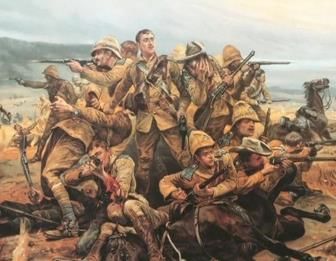 Boer War
Boer War
Reaction to Increasing Westernisation
- The new leaders were aware of the risks associated with excessive westernization and sensed colonial designs to submerge the Indian national identity within the British Empire. The intellectual and moral inspiration of the new leadership was Indian.
- Intellectuals like Swami Vivekananda, Bankim Chandra Chatterjee, and Swami Dayananda Saraswati inspired many young nationalists with their forceful and articulate arguments, painting India’s past in brighter colors than the British ideologues had.
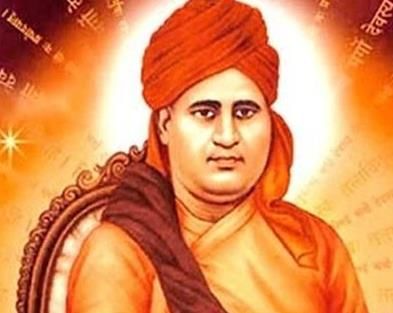 Swami Dayananda Saraswati
Swami Dayananda Saraswati
Dissatisfaction with Achievements of Moderates
- The younger elements within the Congress were dissatisfied with the achievements of the Moderates during 1906-1916.
- They were strongly critical of the methods of peaceful and constitutional agitation, popularly known as the “Three P’s”—prayer, petition, and protest—and described these methods as "political mendicancy’.
Reactionary Policies of Curzon
- A sharp reaction was created in the Indian mind by Curzon’s seven-year rule in India which was full of missions, commissions, and omissions.

- He refused to recognize India as a nation, and insulted Indian nationalists and the intelligentsia by describing their activities as "letting off of gas”. He spoke derogatorily of Indian character in general.
Existence of a Militant School of Thought
- There was a strong aversion to foreign rule, as it was believed that no hope could come from it, and Indians needed to strive for their own freedom.
- Swaraj (self-rule) was regarded as the ultimate goal of the national movement.
- Direct political action was deemed necessary, with the belief that the masses were incapable of challenging authority.
- Personal sacrifices were considered essential, and a true nationalist must always be prepared for this.
Emergence of a Trained Leadership
- The new leadership could provide proper channelization of the immense potential for the political struggle which the masses possessed and, as the militant nationalists thought, we're ready to give expression too.
- This mass energy was released during the movement against the partition of Bengal, which evolved into the swadeshi agitation.
The Swadeshi and Boycott Movement
The Swadeshi Movement had its genesis in the anti-partition movement which was started to oppose the British decision to partition Bengal.
Partition of Bengal to Divide People
- The British government’s decision to partition Bengal had been made public in December 1905.
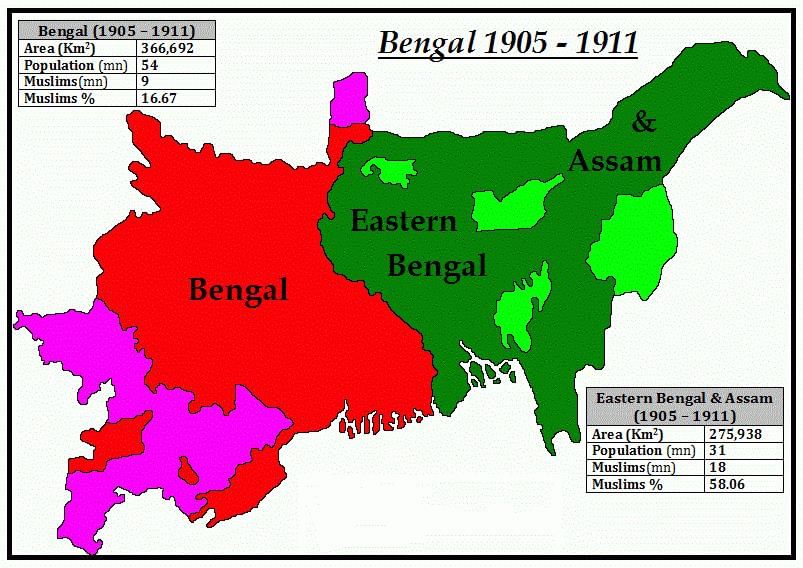
- The idea was to have two provinces: Bengal comprising Western Bengal as well as the provinces of Bihar and Orissa, and Eastern Bengal and Assam.
- Bengal retained Calcutta as its capital, while Dacca became the capital of Eastern Bengal.
Anti-Partition Campaign Under Moderates (1903-05)
- The methods adopted were petitions to the government, public meetings, memoranda, and disseminating information through pamphlets and newspapers such as Hitabadi, Sanjibani, and Bengalee.
- Their objective was to exert sufficient pressure on the government through an educated public opinion in India and England to prevent the unjust partition of Bengal from being implemented.
- The government announced the partition of Bengal in July 1905. On August 7, 1905, with the passage of the Boycott Resolution in a massive meeting held in the Calcutta Townhall, the formal proclamation of the Swadeshi Movement was made.
- October 16, 1905, the day the partition formally came into force, was observed as a day of mourning throughout Bengal. 'Amar Sonar Bangla', the national anthem of present-day Bangladesh, was composed by Rabindranath Tagore.
The Congress’s Position
- The Indian National Congress, meeting in 1905 under the presidency of Gokhale, resolved to (i) condemn the partition of Bengal and the reactionary policies of Curzon, and (ii) support the anti-partition and Swadeshi Movement of Bengal.
- A big step forward was taken at the Congress session held at Calcutta (1906) under the presidentship of Dadabhai Naoroji, where it was declared that the goal of the Indian National Congress was “self-government or Swaraj.
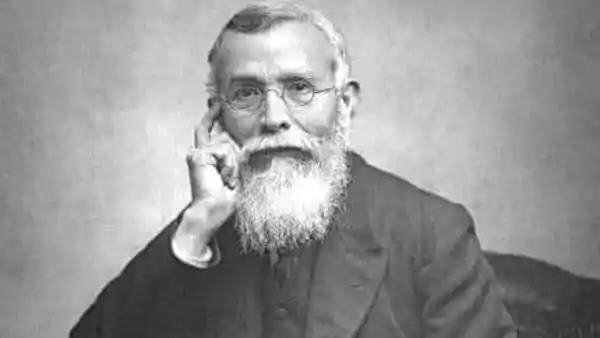 Dadabhai Naoroji
Dadabhai Naoroji
The Movement under Extremist Leadership
There were three reasons for this:
- The Moderate-led movement had failed to yield results.
- The governments of both Bengal regions used divisive tactics that angered the nationalists.
- The government employed suppressive measures against the people.
The Extremist Programme gave a call for passive resistance in addition to swadeshi and boycott The purpose, as Aurobindo put it, was to “make the administration under present conditions impossible by an organized refusal to do anything which will help either the British commerce in the exploitation of the country or British officialdom in the administration of it”. 'Political freedom is the life-breath of a nation,” declared Aurobindo.
The Extremist Programme
- Inspired by Dadabhai Naoroji's statement at the Calcutta session of the Indian National Congress (1906) that the goal of the Congress was self-government or swaraj, the Extremists called for a form of passive resistance.
- This resistance included actions such as:
- Boycotting government schools and colleges
- Refusing to work in government jobs
- Avoiding courts and legislative councils
- Not participating in municipalities
- Rejecting government titles
- The aim, as stated by Aurobindo, was to make it impossible for the current administration to function by:
- Organizing a refusal to support British businesses
- Not aiding British officials in running the country
- The militant nationalists sought to turn the antipartition and Swadeshi Movementinto a large-scale struggle for:
- India's independence from foreign rule
- Aurobindo emphasized that political freedom is essential for a nation, saying, "Political freedom is the lifebreath of a nation."
- Therefore, the Extremists placed the idea of India's independence at the center of Indian politics.
- They believed that achieving independence would require self-sacrifice.
New Forms of Struggle
- Boycott of Foreign Goods, Public Meetings, and Processions.
- Corps of Volunteers or 'Samitis'-Samitis such as the Swadesh Bandhab Samiti of Ashwini Kumar Dutta (in Barisal) emerged as a very popular and powerful means of mass mobilization. In Tirunelveli, Tamil Nadu, V.O. Chidambaram Pillai, Subramania Siva, and some lawyers formed the Swadeshi Sangam which inspired the local masses.
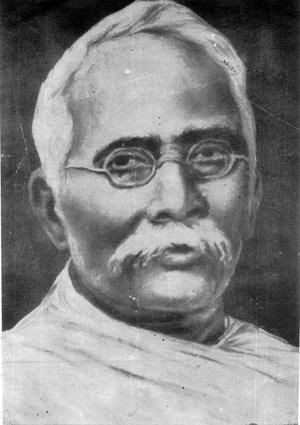 Ashwini Kumar Dutta
Ashwini Kumar Dutta - Imaginative use of Traditional Popular Festivals and Melas.
- Emphasis was given to Self-Reliance.
- Program of Swadeshi or National Education-Bengal National College, inspired by Tagore's Shantiniketan, was set up with Aurobindo Ghosh as its principal. On August 15, 1906, the National Council of Education was set up to organize a system of education— literary, scientific and technical—on national lines and under national control.
- Promotion of Swadeshi or indigenous enterprises - V.O. Chidambaram Pillai initiated a national shipbuilding project, the Swadeshi Steam Navigation Company, in Tuticorin.
- Impact in the Cultural Sphere In Tamil Nadu, Subramania Bharati wrote Sudesha Geetham. In painting, Abanindranath Tagore broke the domination of Victorian naturalism over the Indian art scene and took inspiration from Ajanta, Mughal, and Rajput paintings. Nandalal Bose, who left a major imprint on Indian art, was the first recipient of a scholarship offered by the Indian Society of Oriental Art, founded in 1907.
Extent of Mass Participation
- Student Involvement: Student participation was visible in Bengal, Maharashtra, especially in Poona, and in many parts of the South—Guntur, Madras, Salem.
- Role of Women: Women play a significant role in the national movement.
- Religious and Cultural Factors: The nature of the Swadeshi Movement, with leaders evoking Hindu festivals and goddesses for inspiration, tended to exclude the Muslims. In September 1905, more than 250 Bengali clerks of the Burn Company, Howrah, walked out in protest against a derogatory work regulation.
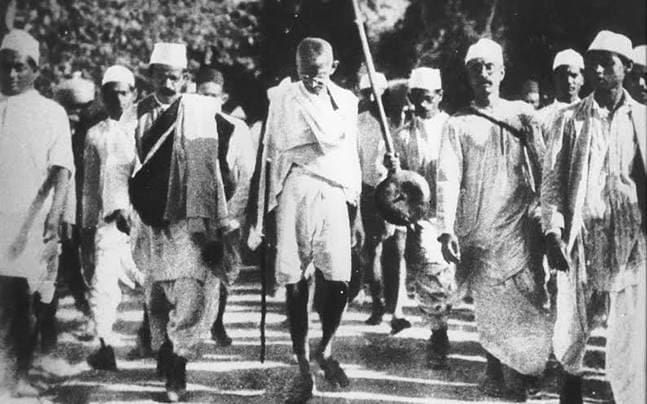 Swadeshi Movement
Swadeshi Movement - Formation of Workers' Unions: In July 1906, a strike of workers in the East Indian Railway resulted in the formation of a Railwaymen’s Union.
- Strikes in Jute Mills and Other Industries: Between 1906 and 1908, strikes in the jute mills were very frequent, Subramania Siva and Chidambaram Pillai led strikes in Tuticorin and Tirunelveli in a foreign-owned cotton mill. In Rawalpindi (Punjab), the arsenal and railway workers went on strike
- Nationwide Support for Bengal's Unity: All India Aspect Movements in support of Bengal's unity and the swadeshi and boycott agitation were organized in many parts of the country.
Annulment of Partition
- The annulment came as a rude shock to the Muslim political elite. It was also decided to shift the capital to Delhi.
Evaluation of the Swadeshi Movement
- The movement failed to create an effective organization or a party structure. It threw up an entire gamut of techniques that later came to be associated with Gandhian politics— noncooperation, passive resistance, filling of British jails, social reform, and constructive work—but failed to give these techniques a disciplined focus.
- The movement was rendered leaderless with most of the leaders either arrested or deported by 1908 and with Aurobindo Ghosh and Bipin Chandra Pal retiring from active politics.
- Internal squabbles among leaders, magnified by the Surat split (1907), did much harm to the movement.
- The movement aroused the people but did not know how to tap the newly released energy or how to find new forms to give expression to popular resentment. The movement largely remained confined to the upper and middle classes and zamindars and failed to reach the masses—especially the peasantry.
- Non-cooperation and passive resistance remained mere ideas.
- It is difficult to sustain a mass-based movement at a high pitch for too long.
The Movement Fizzles Out (Decline)
- By 1908, the movement had lost its leaders, as most of them were either arrested or deported. Aurobindo Ghosh and Bipin Chandra Pal withdrew from politics because they were disheartened by the movement's lack of success.
- Internal disputes among leaders, magnified by the Surat split (1907), did much harm to the movement.
- The movement aroused the people but did not know how to tap the newly released energy or how to find new forms to give expression to popular resentment. The movement largely remained confined to the upper and middle classes and zamindars and failed to reach the masses—especially the peasantry.
- While the concepts of non-cooperation and passive resistance were significant, they faced difficulties in translating into concrete actions among the people.
- It is difficult to sustain a mass-based movement at a high pitch for too long.
Movement a Turning Point
- The Swadeshi Movement marked a crucial turning point by bringing into the fold previously overlooked groups such as students, women, workers, and various urban and rural communities.
- All the major trends of the national movement, from conservative moderation to political extremism, from revolutionary activities to incipient socialism, from petitions and prayers to passive resistance and non-cooperation, emerged during the Swadeshi Movement.
- The richness of the movement was not confined to the political sphere but encompassed art, literature, science, and industry also.
- People were aroused from slumber and now they learned to take bold political positions and participate in new forms of political work.
- The swadeshi campaign undermined the hegemony of colonial ideas and institutions.
- The future struggle was to draw heavily from the experience gained.
Moderate Methods Give Way to Extremist Modes
- The Swadeshi Movement marked the decline of Moderate methods, as petitions and speeches became ineffective.
- Their failure to get the support of the younger generation for their style of politics.
- Their failure to work among the masses had meant that their ideas did not take root among the masses.
- The Extremist ideology and its functioning also lacked consistency. Its advocates ranged from open members and secret sympathizers to those opposed to any kind of political violence.
The Surat Split
The Congress split at Surat came in December 1907, around the time when revolutionary activity had gained momentum. The two events were not unconnected.
Run-up to Surat
- In December 1905, at the Benaras session of the Indian National Congress presided over by Gokhale.
- During this session, a resolution was passed addressing the partition of Bengal, criticizing Curzon's policies, and supporting the swadeshi and boycott movement in Bengal.
- The Calcutta session of the Congress in December 1906
- Moderates wanted to restrict the Boycott Movement to Bengal and to a boycott of foreign cloth and liquor. Extremists wanted to take the movement to all parts of the country and include within its ambit all forms of association
Split Takes Place
- The split within the Congress Party was inevitable.
- Moderates took over the leadership and quickly reaffirmed the party's commitment to self-government within the British Empire.
- They emphasized achieving this goal through constitutional methods only.
Government Repression
- The government implemented several repressive measures, including the Seditious Meetings Act in 1907, the Indian Newspapers (Incitement to Offences) Act in 1908, the Criminal Law Amendment Act in 1908, and the Indian Press Act in 1910.
- Bal Gangadhar Tilak, the main Extremist leader, was tried in 1909 for sedition for what he had written in 1908 in his Kesari about a bomb was thrown by Bengal revolutionaries in Muzaffarpur 107.
- On 30 April 1908, Khudiram Bose threw a bomb on a carriage at Muzzafarpur, to kill the Chief Presidency Magistrate Douglas Kingsford.
- Khudiram Bose Indian revolutionary who opposed British rule of India.
(i) He was sentenced to death at the age of 19 making him one of the youngest revolutionaries in India.
(ii) Khudiram was hanged on 11 August 1908. - The first attempt to kill Kingsford was in the form of a book bomb constructed by Hemchandra.
- Indian revolutionary Prafulla Chandra Chaki also associated with the Muzzafarpur bomb case along with Khudiram Bose.
The Government Strategy
- In the government’s view, the Moderates still represented an anti-imperialist force consisting of basically patriotic and liberal intellectuals..
- The policy was to be of tally them (John Morley— the secretary of state) or the policy of 'carrot and stick’.
- It may be described as a three-pronged approach of repression, conciliation, suppression.
- In the first stage, the Extremists were to be repressed mildly.
- In the second stage, the Moderates were to be placated through some concessions
- The Surat split suggested that the policy of carrot and stick had brought rich dividends to the British Indian government.
Morley-Minto Reforms—1909
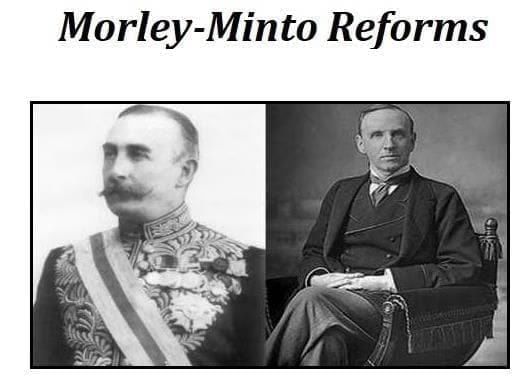 Minto at left and Morley at right
Minto at left and Morley at right
- In October 1906, a group of Muslim elites called the Simla Deputation, led by the Agha Khan, met Lord Minto and demanded separate electorates for the Muslims.
- The same group quickly took over the Muslim League, initially floated by Nawab Salimullah of Dacca along with Nawabs Mohsin-ul-Mulk and Waqar-ul-Mulk in December 1906.
The Reforms
- The Morley- Minto (or Minto-Morley) Reforms translated into the Indian Councils Act of 1909.
- The elective principle was recognized for the non-official membership of the councils in India. Indians were allowed to participate in the election of various legislative councils, though on the basis of class and community.
- For the first time, separate electorates for Muslims for election to the central council was established—a most detrimental step for India.
- The number of elected members in the Imperial Legislative Council and the Provincial Legislative Councils was increased. In the provincial councils, a non-official majority was introduced, but since some of these non-officials were nominated and not elected, the overall non-elected majority remained.
- According to Sumit Sarkar, in the Imperial Legislative Council, of the total 69 members, 37 were to be the officials and of the 32 non-officials, 5 were to be nominated. Of the 27elected non-officials, 8 seats were reserved for the Muslims under separate electorates (only Muslims could vote here for the Muslim candidates), while 4 seats were reserved for the British capitalists, 2 for the landlords, and 13 seats came under the general electorate.
- The elected members were to be indirectly elected. The local bodies were to elect an electoral college, which in turn would elect members of provincial legislatures, who in turn would elect members of the central legislature.
- Besides separate electorates for the Muslims, representation in excess of the strength of their population was according to the Muslims. Also, the income qualification for Muslim voters was kept lower than that for Hindus.
- Powers of legislatures—both at the center and in provinces—were enlarged and the legislatures could now pass resolutions (which may or may not be accepted), ask questions and supplementary, vote separate items in the budget through the budget as a whole could not be voted upon.
- One Indian was to be appointed to the viceroy’s executive council (Satyendra Sinha was the first Indian to be appointed in 1909).
Evaluation
- Lord Morley said, “If it could be said that this chapter of reforms led directly or indirectly to the establishment of a parliamentary system in India, I, for one, would have nothing at all to do with it.”
- The system of election was too indirect and it gave the impression of “infiltration of legislators through a number of sieves".
- What the reforms of 1909 gave to the people of the country was a shadow rather than substance.
- The people had demanded self-government but what they were given was ''benevolent despotism''.
To test yourself on the topic of "The Era of Militant Nationalism", you just read, attempt the test given below:
|
109 videos|653 docs|168 tests
|
FAQs on Spectrum Summary: Era of Militant Nationalism (1905-1909) - History for UPSC CSE
| 1. What was the Swadeshi and Boycott Movement during the Era of Militant Nationalism? |  |
| 2. What was the significance of the Swadeshi and Boycott Movement in the growth of militant nationalism? |  |
| 3. How did the Swadeshi and Boycott Movement impact the Indian economy during the early 20th century? |  |
| 4. What were some of the key events that took place during the Era of Militant Nationalism (1905-1909)? |  |
| 5. How did the Era of Militant Nationalism set the stage for the later independence movement in India? |  |






















